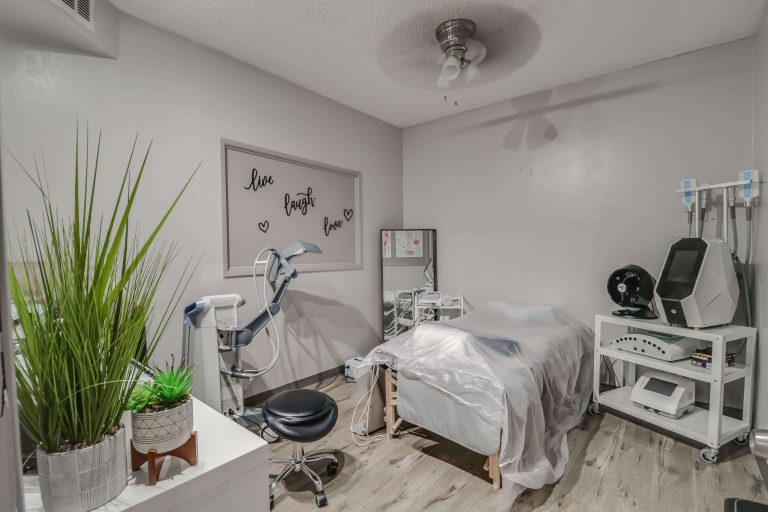Facelift Reflections: Signs It’s Time for Facial Rejuvenation
Posted on: January 18, 2024
The concept of a facelift has transcended mere cosmetic enhancement, becoming a symbol of rejuvenation for many seeking to reflect their inner vitality. As medical techniques advance, the procedure evolves, promising subtler and more natural results. Navigating through the myriad of options requires understanding the nuances between surgical methods and non-invasive alternatives. This post illuminates the path to informed decisions about facial rejuvenation, demystifying the process and outcomes of modern facelifts.
Ideal Age for Facelift Surgery
Age Range
The typical age for considering a facelift usually falls between 40 and 70 years. This period is when signs of facial aging become more prominent. However, the perfect time for this surgery isn’t set in stone.
Many individuals notice sagging skin or wrinkles as they approach their forties. It’s common to start seeing changes in facial structure around this time. By the sixties or seventies, these changes are often more noticeable. Each person ages differently, so there’s no universal “perfect age” for a facelift.
Health Factors
When thinking about a facelift, one’s health and skin condition matter more than their chronological age. Skin elasticity is crucial because it determines how well the skin will respond to surgery and heal afterwards.
A candidate with good elasticity may see better results from a facelift. Overall health also plays an important role in recovery and success rates of the procedure. A healthy individual without underlying conditions might be an ideal candidate even if they’re older.
For younger patients concerned about aging, less invasive options might be suitable before committing to full surgery. These alternatives can address early signs of aging without extensive downtime:
- Botox injections
- Dermal fillers
- Laser treatments
Each option caters to different needs but generally suits those not ready for surgical intervention.
Signs Indicating Readiness for a Facelift
Visible Jowls
The appearance of noticeable jowls is a clear sign that you might be ready for a facelift. These are areas where the skin has begun to sag along the jawline, creating an undefined profile.
Jowls develop as collagen decreases over time. When your face loses its youthful contours and these changes become prominent, it could be time to consider this procedure.
Deep Wrinkles
Another indicator is the presence of deep wrinkles around the mouth. These lines can give away your age more than any other feature on your face.
Wrinkles form from years of facial expressions and reduced skin elasticity. If creams and serums no longer do the trick, a facelift may provide a more lasting solution.
Sagging Skin
Sagging skin and loss of muscle tone in facial areas are significant factors pointing towards facelift surgery. This type of aging effect can make people feel like they need to turn back the clock on their appearance.
When skin care routines fail to tighten loose skin, many people find that surgical intervention offers them desired change.
Impact on Life
Feeling self-conscious about how aging affects one’s look can impact daily life significantly. It might influence personal relationships or professional confidence.
If looking in the mirror often ends with dissatisfaction or if you’re constantly trying to hide signs of aging, scheduling a consultation could be beneficial.
To sum up:
- A facelift addresses multiple signs of aging.
- It helps regain confidence affected by visible aging effects.
- The decision should align with personal needs rather than conforming to an ideal age or trend.
Different Types of Facelift Procedures
Full Facelift
A traditional full facelift provides the most comprehensive results. This procedure addresses multiple areas of the face for a rejuvenated appearance. It tightens skin, reduces wrinkles, and improves overall facial contours.
Patients often choose this after noticing signs of aging across their entire face. The full facelift can correct sagging cheeks, smooth deep folds, and lift the entire lower half of the face. Recovery time is longer due to the extent of changes made.
Mid-Facelift
The mid-facelift concentrates on enhancing the middle portion of your face. This includes lifting the area around your cheeks and eyes. It’s designed for those who have sagging in these specific regions but not necessarily in their lower face or neck.
This targeted approach means less recovery time compared to a full facelift. A mid-facelift restores youthful volume to cheeks and can reduce under-eye hollows or bags.
Lower Facelift
Lastly, a lower facelift targets signs of aging from your mouth down to your neck. It focuses on improving jawline definition and addressing loose skin or excess fat in the neck area.
Ideal candidates are usually content with their upper facial features but want to resolve jowls or “turkey neck.” A lower facelift helps achieve a sharper profile and smoother neckline.
Each type has its own set benefits:
- Traditional Full: Comprehensive rejuvenation.
- Mid-Facelif: Focuses on mid-face youthfulness.
- Lower Facelif: Enhances jawline and neckline.
Understanding Mini Facelifts
Less Invasive
Mini facelifts are less invasive than traditional procedures. This means smaller incisions and less scarring. Patients often prefer this because it leads to a shorter recovery time. You can expect to return to normal activities much sooner.
The procedure is also safer with fewer risks of complications. It’s an outpatient surgery, typically taking about two hours.
Mild Aging
This technique is ideal for mild to moderate aging signs. If you have slight sagging or wrinkles, a mini facelift could be right for you. It’s not for deep folds or significant sagging skin.
Patients in their forties and fifties often choose mini facelifts as a preventive measure.
Lower Face Focus
A mini facelift targets the lower part of your face. It tightens loose skin and smoothens out wrinkles around the mouth and jawline.
It provides a refreshed look without changing your fundamental appearance.
Neck Lift in Conjunction with Facelift
Enhanced Jawline
A neck lift addresses sagging skin and excess fat under the chin. It sculpts the area, giving a more youthful look. When paired with a facelift, results are harmonious.
With this procedure, patients see a defined jawline. Their profile looks better too. This combination can take years off one’s appearance.
Harmonious Results
Combining a neck lift with a facelift ensures consistency across features. It prevents mismatched areas between face and neck.
The right decision to combine procedures leads to balanced rejuvenation. Patients feel their entire appearance has been refreshed rather than parts in isolation.
Cost Considerations for Facelift Surgery
Procedure Variables
The cost of a facelift can differ greatly. It depends on the type of procedure, the surgeon’s level of experience, and the surgery location. A full facelift will typically cost more than a mini-facelift due to its complexity.
Surgeons with extensive experience may charge higher fees. They bring expertise that can ensure better results and fewer complications. Location also plays a role; surgeries in major metropolitan areas often have higher rates than those in smaller towns.
Additional Expenses
When budgeting for a facelift, remember to account for extra costs. These include anesthesia fees, facility charges, and special garments needed after surgery.
Anesthesia is crucial for comfort during the procedure but adds to the total expense. Facility fees cover the use of surgical rooms and equipment which are essential parts of your safety during surgery. Post-surgery garments support healing but also increase costs.
Payment Options
Insurance rarely covers cosmetic procedures like facelifts since they are elective surgeries not deemed medically necessary. However, many clinics offer financing plans to help patients manage payments over time. These options allow individuals to achieve their aesthetic goals without paying all expenses upfront.
Recovery Period After Facelift Surgery
Initial Timeline
After a facelift, patients need time to heal. The first two to three weeks are crucial for initial recovery. During this period, rest is vital. Patients might see changes in their appearance daily as swelling and bruising decrease.
Most people can return to work within a few weeks. However, full recovery can take several months. It’s important not to rush this process.
Post-Op Care
Post-operative care is key for a smooth recovery. Steps include:
- Reducing swelling with cold compresses.
- Minimizing bruising by keeping the head elevated.
- Taking care of incisions as advised by the surgeon.
Patients must follow these steps closely to ensure proper healing and avoid complications.
Follow-Up Visits
Regular check-ups with the surgeon are essential after surgery. These visits allow doctors to monitor progress and address any concerns quickly.

The frequency of appointments will decrease as the patient heals over time.
Longevity of Facelift Results
Lasting Effects
Facelifts are not permanent. However, the results can be long-lasting. Patients often enjoy a youthful appearance for about 10 years or more. To maintain these effects, one should adopt a diligent skincare routine and healthy lifestyle habits.
Proper skincare includes regular use of sunscreen and moisturizers. It helps protect the skin from sun damage and keeps it hydrated. Lifestyle choices matter too. Eating well, staying hydrated, avoiding smoking, and limiting alcohol consumption can all contribute to preserving facelift results.
Environmental Impact
Over time, gravity and aging will inevitably alter facelift outcomes. The skin continues to age naturally even after surgery. Environmental factors like sun exposure also play a role in how long the benefits last.
To mitigate these effects, patients should minimize their time in direct sunlight and always wear protective clothing or sunscreen when outdoors. Regular visits to a dermatologist may help catch any issues early on which could affect the longevity of facelift results.
Touch-Up Options
Non-surgical procedures can extend a facelift’s life span.
- Minor touch-ups with injectables like Botox or fillers
- Laser treatments that promote collagen production
These options do not replace another surgery but can refresh your look without additional downtime.
Closing Thoughts
Facelift surgery stands as a potent symbol of the quest for rejuvenation, blending art and science to restore youthful contours. The decision to undergo such a transformative procedure is deeply personal, hinging on physical signs of aging, individual health status, and emotional readiness. With an array of techniques ranging from traditional facelifts to mini lifts and complementary neck lifts, patients can tailor their surgical journey to their unique needs. Financial planning and understanding the recovery process are equally critical, ensuring that candidates approach this milestone with clarity and confidence.
The benefits of facelift surgery extend beyond the immediate aesthetic enhancements; they imbue a sense of renewed self-assurance that radiates through all facets of life. Those considering this life-changing step should seek consultation with a board-certified plastic surgeon to explore options, set realistic expectations, and embark on the path to revitalized appearance. Take action today—your journey towards a refreshed you awaits.
Frequently Asked Questions
What is the ideal age for a facelift surgery?
The ideal age for a facelift varies, but it’s typically performed on individuals between 40 and 70 years old who exhibit signs of facial aging.
How do I know if I’m ready for a facelift?
Readiness for a facelift includes visible signs of aging such as sagging skin, deep wrinkles, and jowls that are not responsive to non-surgical treatments.
Are there different types of facelift procedures?
Yes, there are various types of facelifts including traditional full facelifts, mid-facelifts, lower facelifts, and mini-facelifts tailored to address specific areas and concerns.
What is a mini-facelift?
A mini-facelift targets mild to moderate signs of aging with smaller incisions and less recovery time compared to traditional full facelifting techniques.
Can neck lift be done with my facelift surgery?
Absolutely. A neck lift can be performed in conjunction with a face lift to enhance the overall rejuvenation effect by addressing loose skin and muscle banding in the neck area.
How much does a typical face lift cost?
Facial lifting costs vary depending on procedure complexity but generally range from $7,000 to $15,000. Factors like geographic location and surgeon experience also affect pricing.
What is the expected recovery period after face lifting surgery?
Recovery from facial lifting typically requires two weeks off work or social activities. Full healing may take several months for all swelling to subside completely.
How long will the results of my face lift last?
Results from facial lifts can last ten years or more; however longevity depends on factors such as skin quality lifestyle habits genetic factors among others.





